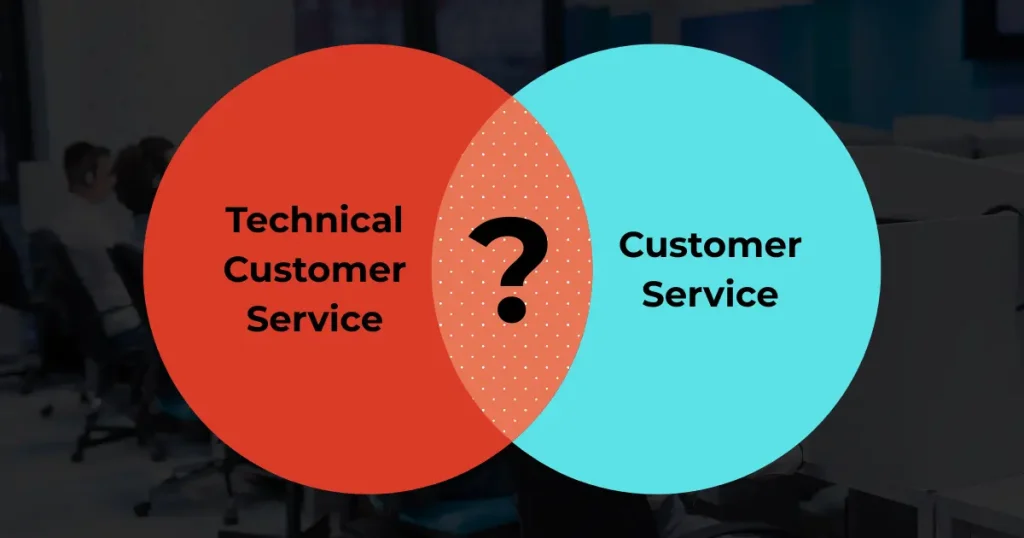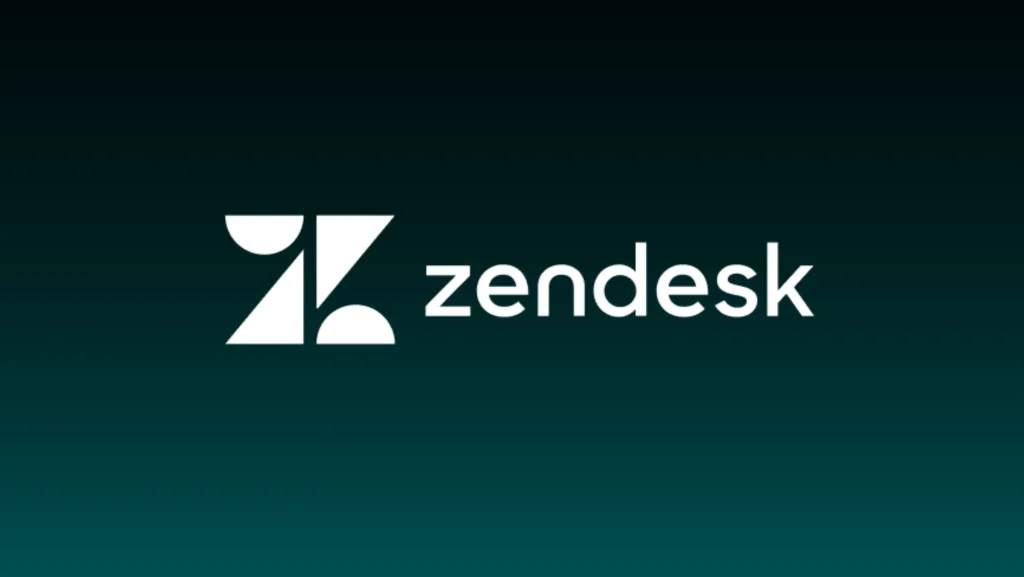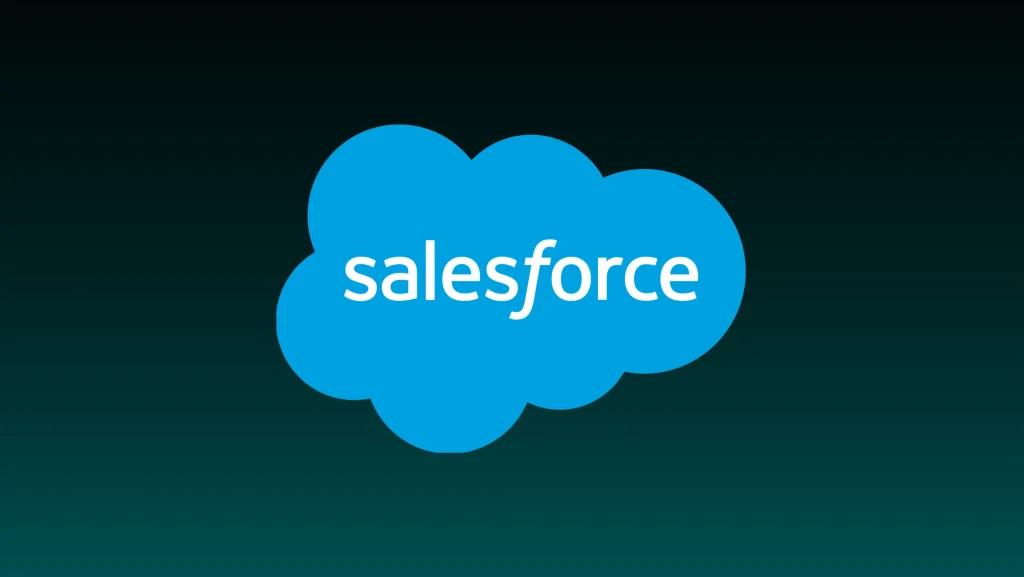Table of Contents
Introduction
In today’s hyperconnected, always-on world, customers expect far more than a quick fix when something goes wrong with their technology. They want empathy. They want transparency. They want the confidence that they are in capable hands — and they expect all of this to happen fast.
That’s where technical customer service steps in. It’s not just about solving an error message or replacing faulty hardware — it’s about delivering a seamless, reassuring experience that builds trust, reduces frustration, and strengthens loyalty.
In this guide, we’ll break down exactly what technical customer service is, how it differs from general customer service, why it matters so much for business success, and how you can elevate it to a competitive advantage. We’ll explore real-world examples, best practices, outsourcing strategies, and future trends to help your team deliver support that customers rave about — not just accept.
What is Technical Customer Service?

Technical customer service is the process of helping customers resolve technical issues with products, software, hardware, or digital services — while ensuring a positive, stress-free experience.
This role goes beyond simply fixing bugs. The best technical support professionals also:
- Translate complex technical information into plain language customers can understand.
- Provide step-by-step guidance without overwhelming users.
- Maintain a calm, professional demeanor — even when customers are stressed or frustrated.
Common contexts where technical customer service applies include:
- SaaS & Cloud Platforms – Helping clients integrate with APIs, troubleshoot login problems, or recover lost data.
- Consumer Electronics – Assisting with device pairing, firmware updates, and warranty support.
- Healthcare Technology – Supporting HIPAA-compliant access to patient portals or configuring medical devices.
- Telecom & Internet Providers – Resolving service outages, equipment configuration issues, or billing-related tech questions.
📊 According to the 2024 Zendesk CX Trends Report, 70% of customers expect a company’s technical support team to be as knowledgeable about the product as the engineers who built it.
The role is a blend of problem-solving, customer communication, and product expertise — making it both challenging and incredibly valuable for customer retention.
What is Customer Service?

Customer service is the broader discipline covering all interactions between a business and its customers — from the moment they discover your brand to long after they’ve made a purchase.
While technical customer service focuses on resolving technical challenges, customer service ensures every touchpoint is smooth, professional, and positive — whether that’s answering a billing question, guiding a purchase decision, or resolving a complaint.
Key characteristics of customer service:
- Focuses on relationships and satisfaction rather than technical troubleshooting.
- Is often proactive, anticipating and preventing issues before they arise.
Requires strong empathy, listening, and problem-resolution skills.
Technical Customer Service vs. Customer Service — Key Differences

| Aspect | Technical Customer Service | Customer Service |
|---|---|---|
| Goal | Solve technical problems quickly and accurately | Ensure positive overall customer experience |
| Scope | Focused on technical aspects of a product/service | Covers all customer interactions, technical or not |
| Skills Needed | Technical expertise + troubleshooting | Empathy, communication, problem-solving |
| Typical Channels | Phone, live chat, remote desktop, email | Phone, email, chat, social media, in-person |
| Interaction Type | Usually reactive (triggered by a problem) | Often proactive (preventing problems) |
Industry Examples of Technical Customer Service in Action
Technical customer service plays a vital role across multiple industries — but the priorities, compliance requirements, and customer expectations can vary widely. Below are real-world technical customer service examples that show how the right approach can protect revenue, boost satisfaction, and strengthen customer loyalty.
| Industry | Scenario & Response | Value |
|---|---|---|
| SaaS & Technology |
Scenario: A new customer can’t integrate your platform with their CRM. Response: Guide them through the API documentation, test the connection in real time, and escalate to developers if needed. | Fast onboarding increases adoption and reduces early churn. |
| Consumer Electronics |
Scenario: A customer’s smart thermostat won’t connect to Wi-Fi. Response: Walk them through resetting the device, checking router settings, and updating firmware. | Prevents product returns and negative reviews. |
| Healthcare CX |
Scenario: A patient can’t log in to their telehealth portal. Response: Verify identity securely, reset credentials, and confirm HIPAA-compliant access. | Supports patient care continuity and ensures compliance. |
| Retail Technology |
Scenario: A POS system freezes during Black Friday. Response: Remote into the system, clear cache, update software, and get the checkout line moving again. | Prevents lost sales during peak periods. |
| Telecom & Internet Providers |
Scenario: A customer’s internet speed is significantly lower than their plan promises. Response: Run a remote diagnostic, refresh the modem, and guide them through optimal router placement or channel adjustments. | Restores service performance, reduces churn, and improves Net Promoter Score (NPS). |
| Travel & Hospitality |
Scenario: A guest cannot access their digital room key via the hotel’s mobile app. Response: Verify booking details, reset digital access permissions, and confirm functionality while the guest is still on the call. | Protects guest experience scores and encourages repeat bookings. |
Best Practices for Exceptional Technical Customer Service

Technical customer service plays a vital role across multiple industries — but the priorities, compliance requirements, and customer expectations can vary widely. Below are real-world technical customer service examples that show how the right approach can protect revenue, boost satisfaction, and strengthen customer loyalty.
1. Hire & Train for Both Technical and Soft Skills
What it involves: Your support team needs to be just as good with people as they are with technology.
Look for:
- Strong troubleshooting skills
- Patience and empathy under pressure
- Ability to explain complex concepts in plain language
Why it matters: A technically brilliant agent who can’t communicate effectively will frustrate customers and reduce satisfaction scores.
2. Maintain Updated Knowledge Bases
What it involves: Documenting fixes, processes, and best practices in an easily searchable internal knowledge base — and keeping it current.
Pro tip: Update after every product release, patch, or major bug fix.
Why it matters: An accurate knowledge base improves first contact resolution (FCR) rates and keeps answers consistent across your team.
3. Offer Omnichannel Support
What it involves: Providing assistance via the customer’s preferred channels — live chat, phone, email, or social media.
Stat: 90% of customers expect an omnichannel experience (Zendesk, 2024).
Why it matters: Meeting customers where they are increases accessibility and reduces friction in the support process.
4. Balance Automation with Personalization
What it involves: Using AI-powered chatbots and automation tools to handle common or repetitive queries instantly, while keeping human agents available for complex or sensitive cases.
Pro tip: Use automation to collect initial details before handing off to an agent — this reduces resolution times.
5. Measure Performance and Act on Insights
What it involves: Tracking and analyzing KPIs to improve processes.
Key metrics:
- First Contact Resolution (FCR)
- Customer Satisfaction Score (CSAT)
- Net Promoter Score (NPS)
Why it matters: Data-driven improvements help your team become faster, more accurate, and more customer-focused.
Why Technical Customer Service Matters for Businesses
Strong technical customer service isn’t just a “support function” — it’s a growth engine and one of the most powerful competitive differentiators in today’s market. In a world where customer expectations are sky-high and switching to a competitor takes only a few clicks, the way you handle technical issues can determine whether a customer becomes a loyal brand advocate or a lost opportunity.
1. Builds Trust & Loyalty
- Why it matters: Customers often contact technical support when they’re frustrated or anxious. How your team responds can completely shift their perception of your brand.
- Stat: According to Microsoft’s Global State of Customer Service report, 90% of customers say a quick response is important or very important when they have a question.
- Example: A SaaS company that resolves a payment gateway error within an hour — followed by a personal “all clear” email — often earns positive social media mentions and long-term loyalty.
2. Reduces Churn
- Why it matters: Technical issues are among the top three reasons customers leave a provider in sectors like SaaS, telecom, and consumer electronics.
- Stat: Gartner research shows that improving First Contact Resolution (FCR) by just 10% can cut churn rates by up to 30%.
- Pro tip: Speed is important, but consistency matters even more — customers want confidence that issues won’t require multiple follow-ups.
3. Protects Brand Reputation
- Why it matters: An unresolved technical issue can quickly escalate into negative online reviews or social media backlash.
- Stat: BrightLocal’s 2023 survey found that 49% of consumers will not choose a business with less than a 4-star average rating.
- Example: Addressing an outage with proactive communication and a clear recovery timeline can prevent PR crises and even generate goodwill.
4. Drives Revenue
- Why it matters: Satisfied customers buy more, renew more often, and refer more friends and colleagues.
- Stat: Bain & Company found that increasing retention rates by 5% can boost profits by 25–95%.
- Pro tip: Every positive service interaction becomes an opportunity for upselling, cross-selling, or securing renewals — making tech support a profit center, not just a cost center.
5. Ensures Compliance & Reduces Risk
- Why it matters: In regulated industries, even a small mistake in handling technical issues can lead to heavy fines, legal action, and reputational damage.
- Example: A healthcare provider must follow HIPAA guidelines when resetting a patient’s portal login — any deviation could trigger regulatory penalties.
Common Responsibilities in Technical Customer Service
A high-performing technical customer service team wears many hats — often acting as a troubleshooter, educator, and customer advocate all in the same day. These responsibilities go beyond simply “fixing” something; they’re about ensuring the customer feels confident, supported, and satisfied with the resolution process.
Troubleshooting & Diagnosis
What it involves: Identifying the root cause of technical issues — whether they’re software bugs, hardware malfunctions, or configuration errors.
Example tasks: Reproducing customer-reported bugs, analyzing error logs, and testing solutions before applying them.
Why it matters: Accurate diagnosis prevents repeated issues and improves first contact resolution (FCR).
Installation & Configuration Help
What it involves: Guiding customers through initial setup or reconfiguration of products, software, or systems.
Example tasks: Screen-sharing to walk through setup steps, creating video tutorials, or remotely configuring a device.
Why it matters: A smooth setup experience reduces early frustration and lowers future support requests.
Product Usage Guidance
What it involves: Educating customers on how to use features effectively and efficiently.
Example tasks: Explaining hidden features, sharing best practices, or tailoring instructions for a customer’s specific workflow.
Why it matters: Increases product adoption and helps customers get maximum value from their purchase.
Escalation Management
What it involves: Routing complex issues to higher-level technical teams or engineering departments.
Example tasks: Documenting the troubleshooting steps already taken, including error logs and screenshots, before escalation.
Why it matters: Speeds up resolution and ensures the right experts handle the problem without wasted effort.
Customer Communication & Follow-Up
What it involves: Keeping customers informed at every stage of the resolution process — and checking in after to ensure satisfaction.
Example tasks: Sending proactive status updates, confirming fixes post-resolution, and asking for feedback.
Why it matters: Builds trust and reinforces the perception that the customer’s time and experience matter.
The Role of Outsourcing in Technical Customer Service
Outsourcing technical customer service today isn’t just about saving money — it’s a strategic move to gain agility, scalability, and instant access to specialized expertise that can be challenging and costly to develop in-house. Done right, outsourcing can enhance customer satisfaction, reduce operational risk, and free internal teams to focus on innovation.
Benefits of Outsourcing Technical Support
- Scalability During Peak Seasons
Why it matters: Business demand isn’t static — it spikes during product launches, seasonal sales, or unexpected incidents.
Example: A retail brand scales its support team from 20 to 80 agents during Black Friday week without leasing extra office space or investing in new equipment.
Takeaway: Outsourcing lets you ramp up (or down) in days, not months. - Access to Specialized Technical Expertise
Outsourcing partners often have certified specialists in platforms like Zendesk, Salesforce Service Cloud , NICE inContact, and Freshdesk.
This means your customers get knowledgeable help from day one, without you needing to invest months in training. - Reduced Infrastructure & Hiring Costs
No need for extra workstations, software licenses, or HR overhead.
Stat: Deloitte’s 2023 Global Outsourcing Survey found that companies save an average of 30%–50% in operational costs when outsourcing. - Guaranteed Compliance & Security
In regulated industries, the right outsourcing partner can provide SOC 2, HIPAA, GDPR compliance from day one.
Avoids the months of internal setup often required to meet these standards.
NexGen Agency’s Competitive Differentiators
- U.S.-based leadership with global delivery capacity for true 24/7 coverage.
- No seat minimums — start as small or large as you need.
- Fast launch times — be fully operational in as little as 1–2 weeks.
- Deep expertise in Zendesk, Salesforce, NICE, Freshdesk, and other industry-leading platforms.
- Customizable reporting dashboards so you can track metrics in real time.
💡 Pro Tip: For maximum ROI, combine outsourced Tier-1 technical support with in-house Tier-2 escalation teams. This approach offloads repetitive troubleshooting to your outsourcing partner while keeping your core engineers focused on product innovation and critical fixes.
Future Trends in Technical Customer Service
The technical support landscape is evolving at record speed. Customer expectations are higher than ever, technology is advancing rapidly, and the line between technical support and customer experience (CX) is blurring. Businesses that adapt to these shifts will enjoy stronger customer loyalty, faster resolutions, and a clear competitive edge.
1. AI & Machine Learning for Faster, Smarter Support
Artificial Intelligence isn’t replacing human agents — it’s empowering them. AI-powered customer service tools can:
- Predict root causes based on historical ticket data.
- Auto-suggest solutions to agents during live chats or calls.
- Instantly resolve repetitive Tier-1 issues through chatbots and self-service portals.
📊 Stat: Zendesk CX Trends 2024 reports that 72% of customers expect brands to use AI for faster resolutions, yet 61% still want human handoff for complex problems.
Example:
A SaaS company detects multiple users in the same region experiencing login failures. AI flags the pattern, alerts engineers, and posts a real-time status update before the helpdesk is flooded with calls.
2. Augmented Reality (AR) & Remote Visual Troubleshooting
AR technology is transforming support from text or voice instructions to immersive, visual guidance.
- Technicians can view a customer’s device via smartphone camera and overlay real-time visual instructions.
- In healthcare or manufacturing, AR allows customers to perform safe, warranty-compliant adjustments themselves.
Example:
A smart home electronics brand cut return rates by 18% after implementing AR-powered device troubleshooting.
3. Predictive & Preventive Support with Analytics
Predictive analytics uses product telemetry and customer behavior data to spot early signs of technical trouble.
- Allows proactive outreach before the customer experiences downtime.
- Builds trust by preventing problems instead of just fixing them.
Example:
A telecom company detects unusual modem resets in a specific zip code. Engineers push a firmware update to all affected devices, preventing a local service outage.
4. Omnichannel & Integrated CX
Today’s customers expect to start a conversation in one channel and continue in another without repeating themselves.
- Integration between CRM, ticketing systems, and product usage data ensures agents see the full customer history instantly.
- This speeds resolution and makes the experience more personal.
Example:
A healthcare CX team integrates patient portal chat logs, call center notes, and telehealth video records so agents can pick up conversations without missing context.
5. Collaboration Between Support & Product Teams
Technical support is becoming a critical feedback loop for product improvement.
- Recurring ticket patterns reveal bugs, usability issues, or missing features.
- Product teams use this insight to improve documentation, fix code, and launch better updates.
Example:
A retail software vendor tracks repeated “checkout freeze” tickets. Developers patch the issue, support teams proactively notify customers, and the company publicly shares the fix — boosting transparency and trust.
💡 Pro Tip: Staying ahead of these trends means continuous learning. Encourage your technical support team to attend CX webinars, complete AI training programs, and participate in joint sessions with product and engineering teams.
Turning Technical Support into a CX Advantage
Technical customer service was once viewed as a cost center — a necessary expense rather than a strategic asset. That mindset is outdated. In today’s experience-driven economy, exceptional technical support is a growth driver, brand differentiator, and trust builder.
When delivered effectively, technical support:
- Reduces churn by keeping customers confident and satisfied.
- Drives upsell and cross-sell opportunities because happy customers are more receptive to recommendations.
- Protects brand reputation in an era when a single bad review can reach thousands in minutes.
How to Make Technical Support a CX Powerhouse
- Empower Agents with Full Context
Give agents access to CRM records, product usage data, and prior ticket history. The more context they have, the faster they can resolve issues — and the more personalized the experience.
- Create a Feedback Loop with Product & Marketing Teams
Your support team gathers real-world insights daily. Share recurring pain points with product teams for design improvements and marketing teams for better messaging.
- Measure What Matters
Go beyond ticket closures. Track:
- First Contact Resolution (FCR)
- Customer Effort Score (CES)
- Post-resolution satisfaction
These metrics reveal true service quality and customer loyalty drivers.
- Turn Every Interaction into a Relationship Builder
Even when customers are frustrated, empathetic communication and proactive follow-ups can turn them into advocates.
Case Study — From Frustration to Loyalty
Challenge:
A mid-sized SaaS company noticed churn spiking during the first 90 days of onboarding. Most cancellations traced back to integration problems.
Solution:
- Assigned a dedicated technical support specialist to every new account for the first 30 days.
- The specialist monitored system health, proactively contacted customers when errors occurred, and guided them through integrations step-by-step.
Results:
- Onboarding churn dropped 40%.
- Positive customer reviews cited the “proactive, friendly tech team” as a top reason for staying.
The NexGen Advantage
When you partner with NexGen Agency, you gain:
- U.S.-based leadership + global delivery for 24/7 coverage.
- No seat minimums and rapid launch readiness in as little as 1–2 weeks.
- Deep expertise in Zendesk, Salesforce, NICE, and other top-tier platforms.
- SOC 2, HIPAA, and GDPR compliance built into every process.
- We don’t just resolve issues — we turn every interaction into a memorable, loyalty-building moment.
💡 Final Word:
Your technical support team is often the last line of defense between a customer staying loyal or walking away. By investing in skilled agents, advanced tools, and a customer-first culture, you can transform tech support from reactive problem-solving into a proactive, revenue-generating CX advantage.
📞 Call to Action:
Request a consultation with NexGen Agency today and discover how we can help you build a high-performing technical customer service team that scales with your needs — and delights your customers every step of the way.
US-based leadership • 24/7 • Multilingual • SOC 2 • HIPAA • GDPR


FAQs
Q1. What is technical customer service?
Technical customer service is the specialized branch of customer support focused on helping users resolve technical issues with products, software, hardware, or digital services.
This can include:
- Troubleshooting software bugs and device errors
- Guiding customers through installation or configuration
- Providing step-by-step instructions for complex technical tasks
Unlike general customer service, technical support requires in-depth product knowledge and the ability to translate complex technical concepts into plain, customer-friendly language.
Q2. How is technical customer service different from customer service?
While both aim to ensure a positive customer experience, their scope and skillsets differ:
- Customer service covers a broad range of inquiries — billing questions, product returns, general guidance, and relationship management.
- Technical customer service focuses specifically on diagnosing and resolving technical issues, requiring deep product functionality knowledge and troubleshooting expertise.
Think of customer service as the frontline team, while technical support is the special forces that step in when an issue demands advanced expertise.
Q3. What skills are essential for technical support agents?
The best technical support agents combine technical expertise with exceptional people skills. Key abilities include:
- Technical proficiency — Understanding the product, its integrations, and common failure points.
- Problem-solving mindset — Diagnosing issues quickly, testing solutions, and thinking creatively.
- Communication skills — Explaining technical details without jargon.
- Empathy & patience — Guiding frustrated customers calmly and respectfully.
- Adaptability — Staying current with product updates, new features, and evolving technologies.
Q4. What industries benefit most from technical customer service?
Any industry with a technical product or service can benefit, but the ROI is especially high in:
- SaaS & Cloud Software — Smooth onboarding, integration, and uptime.
- Consumer Electronics — Reduces returns and boosts loyalty.
- Healthcare Technology — Ensures HIPAA compliance and supports patient care.
- Telecommunications & Internet Providers — Minimizes downtime and customer churn.
- Retail Technology — Keeps POS systems running during peak periods.
Q5. How does outsourcing improve technical customer service?
Outsourcing technical support to a specialized provider like NexGen Agency delivers multiple advantages:
- Scalability — Expand or contract support capacity quickly during seasonal spikes or major launches.
- Access to expertise — Work with agents trained on leading platforms like Zendesk, Salesforce, and NICE.
- Cost efficiency — Lower infrastructure, licensing, and HR costs without sacrificing quality.
- Compliance — Instantly benefit from SOC 2, HIPAA, and GDPR-ready operations.
- 24/7 coverage — Provide global round-the-clock support without managing multiple shifts.
Q6. What tools can enhance technical customer service?
Modern technical support teams rely on a tech stack to speed up resolutions and improve accuracy:
- Ticketing systems (e.g., Zendesk, Freshdesk) — Organize and track customer issues.
- Live chat platforms — Offer real-time help without requiring a phone call.
- Knowledge bases & FAQs — Let customers solve simple problems independently.
- Remote access tools — Allow agents to troubleshoot devices or systems directly.
- AI chatbots — Handle repetitive queries instantly and escalate complex cases to human agents.